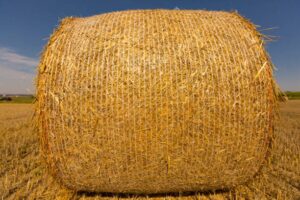Baling twine is used to tie hay or straw bales together. It’s important to find the right agricultural baling twine to make sure that your bales stay together and don’t rot or lose their shape.
Polypropylene twine is commonly used for tying hay bales and comes in several different colours to fit different balers, crops and baling conditions. It’s also dyed and UV-protected to protect against premature deterioration.
1. Durability
 Whether it’s mending fences, reattaching tractor parts, or tying hay bales together, twine is an essential tool for any rancher. However, the type of twine you use could mean a world of difference when it comes to how long your bales last and how much hay you’re able to get from them.
Whether it’s mending fences, reattaching tractor parts, or tying hay bales together, twine is an essential tool for any rancher. However, the type of twine you use could mean a world of difference when it comes to how long your bales last and how much hay you’re able to get from them.
Unlike sisal, which degrades over time, twisted polypropylene baler twine holds up to the demands of any job. It’s able to support more weight than traditional sisal twine, allowing it to keep hay bales together longer.
While twine-wrapped bales can hold up if stored properly, they’re more susceptible to damage over time, which can reduce the amount of usable hay in each bale. Vermeer recommends using high-density polyethylene net wrap to encase large round or square bales before they’re wrapped with twine.
2. Flexibility
Baling twine is designed for use in baling machines and is available in various colours, sizes and materials. Choosing the right twine is essential to get the best results from your baling machine and ensure that you achieve high press density, which will help to reduce your overall cost per bale. It is also important to choose a twine that is UV stabilised and has the correct tensile strength and twists per meter for the type of baling machine you use.
Whether you are using polypropylene or sisal agricultural baling twine, the tight coils help to keep your bales secure in transport and storage – which means less hay will be lost during transit or storage, saving you time and money! The material used for tying bales is also recyclable, making it an environmentally-friendly option.
Unlike synthetic twine, traditional sisal baler twine is biodegradable and won’t contribute to the pollution of our streams, rivers and lakes. It also helps to keep our waterways clean, which is vital for wildlife such as Osprey and all the other fish and wildlife that depend on them.
3. Biodegradability
Baling twine is made from a variety of materials, including natural fibres, sisal, and polypropylene. Biodegradable twine is better for the environment because it will break down naturally in the soil without contributing to landfill waste. It also doesn’t contribute to the growth of weeds and other harmful plants, which is a concern with traditional plastic twine.
Aside from being environmentally friendly, biodegradable twine will help maximise the quality of your hay and straw bales. It will also prevent rot during transport and storage. It will save you money in the long run because less hay or straw will be lost during transportation and storage.
If you are interested in purchasing baling twine that is biodegradable, you can find a variety of options online. The spool sells some, while others come in bundles. Regardless of which option you choose, you should make sure to read the label and look for the certification symbol on your twine. The certification symbol indicates that your twine has been tested and verified to be biodegradable. It is also important to check with your local municipality or State/Provincial recycling department to see if they have a program for picking up hay bale twine.
4. Recyclability
It’s important to use agricultural baling twine that has been treated with UV stabiliser to prevent deterioration. It will also help prevent mould and mildew from forming, which can damage the twine, baling machine and other equipment. This type of twine is also available in a wide variety of colours, making it easy to mark each bale with an identification tag. The tag can be used to record information like the bale weight, moisture content, hay quality and field position for future reference.
The most common twine choices are sisal and polypropylene. Sisal is made of individual strands of plant materials that are twisted together and are naturally biodegradable. Poly is a plastic polymer that won’t be biodegradable anytime soon but has more strength than sisal.